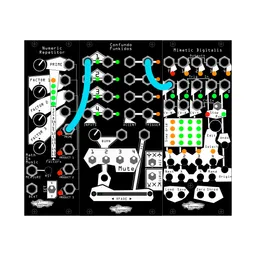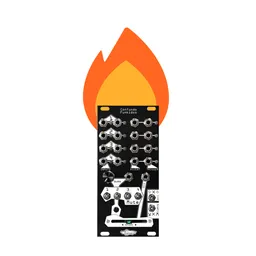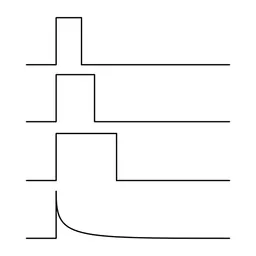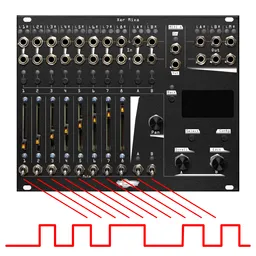Welcome back to another episode of Markus Spent Two Years Figuring Out How To Make A Single Patch! What, you don’t spend literal years of your life thinking about single patch ideas?
In all seriousness, this patch has been in the back of my mind for years. It all stems from a module called the Natural Gate. If you haven’t heard of it, it’s a lowpass gate that has a rather unique behavior: it reacts to trigger frequency -- that is, if you trigger it multiple times quickly, it decays longer and sounds brighter than if you trigger it more slowly.
This was a fascinating concept to me, and I started wondering if this was something that could be patched up with other modules to control a whole slew of different things expressively in a patch. The answer was yes, but it’s kinda difficult, hence the whole “it took two years to figure out” thing [Ed. note: Trust us, Markus is extremely clever.]. As it turns out, what you need are a finely-tuned slew limiter, a sample and hold, and a whole lot of patch cables and mults.
The concept
Tracking frequency of events in Eurorack is… odd. You can’t exactly use the CV output from Google Calendar.
That said, it can be done, with the help of a slew. If you slew a trigger with short rise and fall values, you get an ASR envelope -- not very helpful for today’s patch. But if you slew a trigger with a rise time longer than the pulse width of the trigger and an even longer decay time, it starts to do more interesting stuff. Since the trig is shorter than the time it takes our slew to reach its peak, it won’t get all the way to its maximum voltage by the time it starts to fall again. But if we trigger it while it’s still falling, it’ll rise from that point and reach a higher peak before it falls again. If we trigger it multiple times in quick succession, it’ll hit its peak voltage. If we don’t trigger it again for a while, it’ll fall back down to its minimum.

Now, that gives us a constantly moving CV: if we modulate something like envelope time with a moving CV, it’ll shift the curve of the envelope -- that can be useful in some patches, but it’s not what we’re looking for here. How do we get around that? If you answered,“With a sample and hold!”, give yourself one NE point, redeemable for a virtual high-five at any time.
Now that we understand the technical concepts behind this, let’s get patching.
The patch
For demonstration purposes, let’s use the BIA as our voice, but any voice will do if you can easily control both timbre and length of envelope with voltage.
To create the actual frequency-reactive CV generation thingy, we need a slew. Patch the slew’s output to a sample and hold, then mult your trigger sequencer (or keyboard or whatever you’re using) to the S&H trigger input, the slew input, and the trigger input of your voice. Then, patch the output of the S&H to whatever you want to modulate -- to start, I’d patch it to at least the Decay parameter on our BIA, and maybe Fold or Morph, too.
You’ll need to carefully tune the rise and fall times of your slew: the rise time needs to be long, but not TOO long, otherwise you’ll have to send it quite a lot of triggers before it reaches peak voltages. The release time should be longer than the attack so that it has time to react correctly to the next trigger. I tuned mine so that sending it about 4 triggers in quick succession takes it to maximum. It can take a little time to dial it in, but once you do, it can start to sound pretty awesome.
What else is this useful for?
All kinds of things! The first time I successfully patched this, I routed the CV signal about 5 different destinations, shifting the timbre of my sound and how it decayed in a few different ways. It’s an awesome way to generate CV because it works well with sequencers, but it also works extremely well with a keyboard since it reacts to your playing. If you play a quick passage, you can patch things so that your sound will be brighter, or louder, or decay longer, or anything you like. Then, as you play more slowly, it gets darker and shorter. It’s an interesting way to add expression to your playing and sequences!






